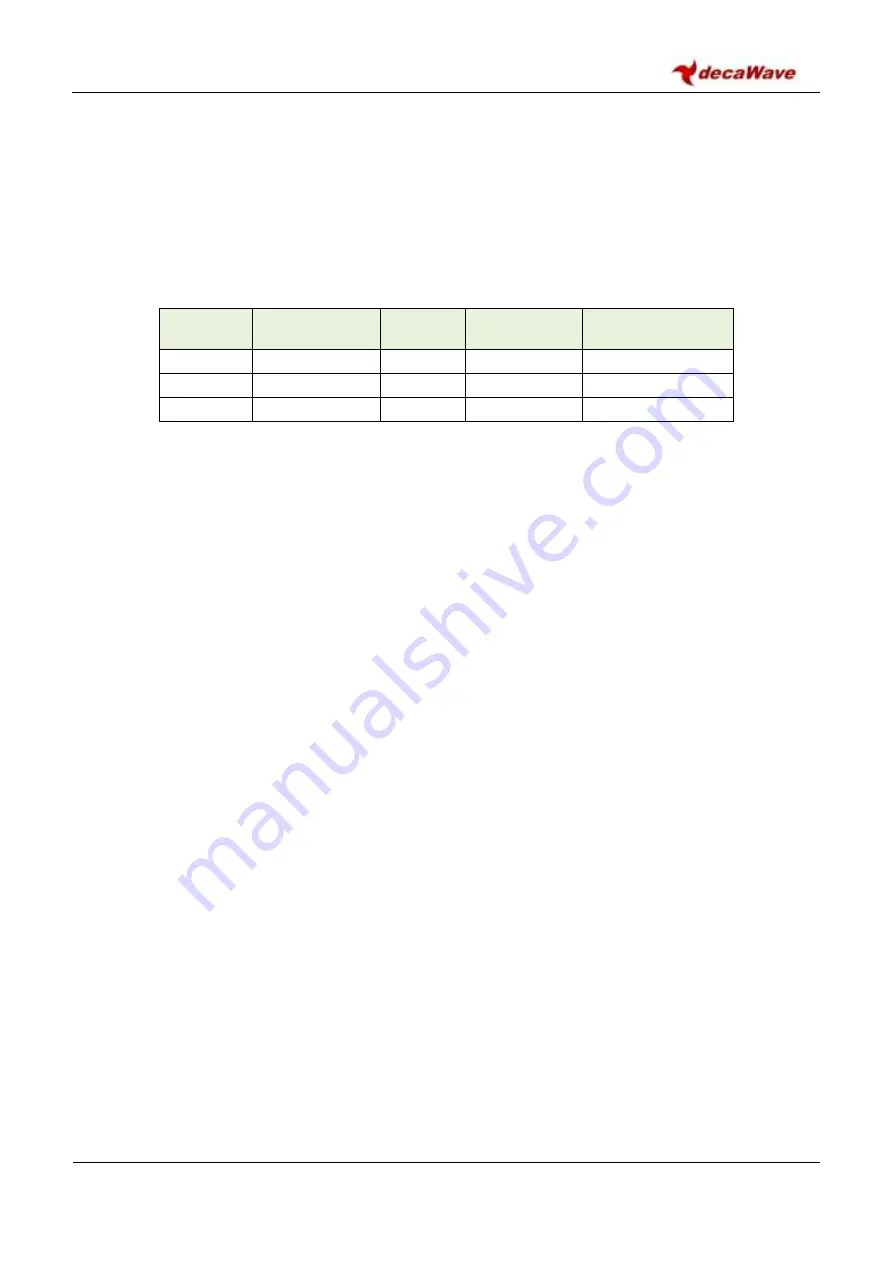
DW1000 User Manual
© Decawave Ltd 2017
Version 2.12
Page 211 of 242
This 18% air utilisation comes into play when deploying a population of RTLS tags periodically blinking. Table
58 gives some indications of the blink transmission rates corresponding to some typical data rate / preamble
length combinations and with a minimum 12-byte blink frame sending the Tag ID. The number of
transmissions that can be made within the 18% air-utilisation is highest for the shortest duration frame (64-
symbol preamble and 6.8 Mbps data rate) and lowest at the long range 110 kbps data rate with its long
preamble.
Table 58: Transmissions per second using ALOHA
Data rate
preamble
length
payload
Transmission
Time
TX per second at
18% air-utilisation
110 kbps
2048 symbols
12 bytes
3.042 ms
59.2
850 kbps
256 symbols
12 bytes
380.3 µs
473.4
6.8 Mbps
64 symbols
12 bytes
103.3 µs
1742
Note: These figures relate to an RTLS tag blink across a population of tags, so for instance at 6.8Mbps
1742 tags could blink once a second, or 17k tags could blink once every 10 s.
When deploying an RTLS system with blinking tags there is a trade-off between the blink rate(location
update rate) across the population of tags and the operating range (and of course power consumption). A
long range system with sparsely spaced anchor nodes cannot have a large population of tags with frequently
updated locations, (i.e. it needs to stay below 60 tags transmitting once per second, or 600 tags transmitting
once every 10 seconds), also as the packet is physically long the blinks in such a long range system consume
more power.
For a high update rate or a high density of tags the highest data rate and shortest preamble length is best.
This means range is lower so more infrastructure anchor nodes are needed, but the shorter blink packet
duration means lower power consumption for transmissions, so for the same update frequency the battery
life will be longer.
A larger percentage of air time can be used in cases where a system includes mechanisms to control when
nodes transmit. For example TDMA where a coordinating node transmits a periodic beacon defining a
“super-frame” that is subdivided into slots, and individual slave nodes synchronise with the beacon and
transmit only in their assigned slots. Employing an accelerometer and reducing the tag blink rate when it is
not moving is another technique that would allow a larger population of tag.
9.6 Low
–duty cycle – air time
In some geographic areas certain UWB channels are only allowed by regulations when the transmissions are
following what are termed low duty cycle (LDC) rules. These LDC rules set limits on the maximum time of an
individual period of transmission, a minimum time between transmissions, a percentage of TX activity
allowed in any one second, and a percentage of activity allowed in any hour.
Depending on the application the LDC rules may or may not be a problem. Where LDC rules are impinging
on system operation there may be an option to use a different frequency band where the LDC rules do not
apply. Also, as the LDC rules relate to transmission time, using higher data rates and short preambles allows
more messages be sent within the time limits.
















































